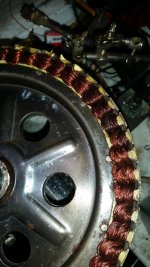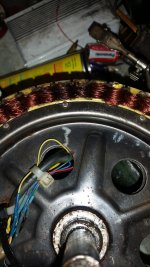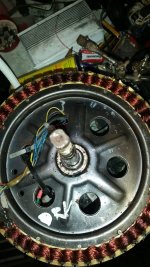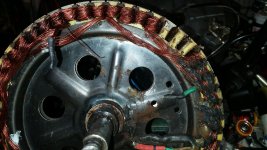m3vuv
100 W
Hi all i have a 1kw direct drive hub motor,its been fine ,some time ago i was running it at about 3kw,did about 1000 miles then went to a smaller battery 47v+ 500 watt controller,been ok for about a year in that setup,the other week i got off the bike and pushed it down the kerb so jolted it a bit,when i tried to ride away after that it just made a sort of feint duzz from the wheel and wouldnt go,i stripped the motor,2 coils next to eachother look blackish,i also tested the resistance between phases and got about .5 ohm,then mounted the wheel in a vice and rotated it while measuring outputs between the phases,they all seemed about even,i thought the motor was ok so brought a new controller,fitted it with no change,just heavy current draw and a sort of buzz from the wheel,i am stumped,is this signs of shorted windings ?,also when it happened i had only ridden it slowly in town for about half a mile so didnt have chance to get warm,what else can i check,i am at a loss,cheers in advance m3vuv.Paul.






